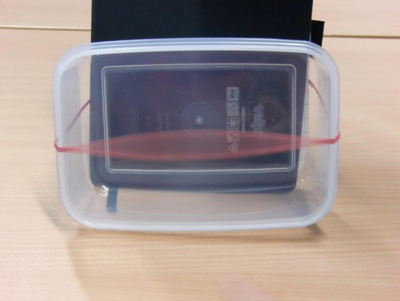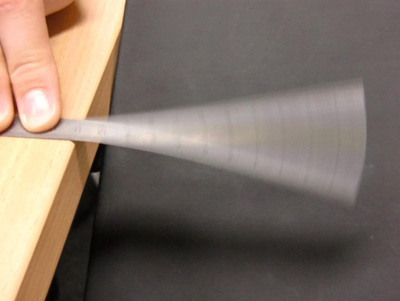Session 1: Sound generation
Objectives: The impact of noise on the environment is one of the goals in greening air transport of the European Union as mentioned in the Flightpath 2050 vision.
Therefore, understanding the process of noise generation and noise reduction plays a major role in the achievement of the goals set and will be an important issue in future research in aeronautics. Qualified and motivated personnel are needed in the long run in order to ensure the infrastructure on this field of research in the future. Introducing the basics about sound and noise in schools is a good way to promote young people’s interest in aeronautics and its related fields.
Flightpath 2050 - Europe’s Vision for Aviation:
“The perceived noise emission of flying aircraft is reduced by 65%. These are relative to the capabilities of typical new aircraft in 2000.”( Flightpath 2050 - Europe’s Vision for Aviation Report of the High Level Group on Aviation Research Page 15; (status as of 2012/02/13) )
As we know from our daily experience sound and noise play an important role in aeronautics. This is the first of six lessons about sound and noise in which the pupils will learn
- how sound is generated
- the principle of a sound source
Acoustic sources are connected with mechanical vibrations. Their properties can be described by means of their amplitude (maximum deflection) and their frequency (number of oscillations per time unit).
Maximum duration
40 minutes
Material
- CD player or computer with loud speakers to play sound samples as introduction,
- box with rubber band (fig 1) or slats with nails to span a rubber band
- ruler (fig 2)
- tuning fork
- glass & water
- paper
- drum (tambourine)
- triangle
- bottles & water
Hint
It is not necessary to provide all of the material mentioned above, but you should offer at least 3-4 different materials, each generating sound in a different way. (e.g. tuning fork & glass filled with water, ruler, box with rubber band.)

fig.1 Box with swinging rubber band
Put the rubber band over the long side of the box so that it spans across the middle. Pluck easily on the rubber band.

fig. 2 The swinging ruler
Press with your hand one end of the ruler to the edge of a table; half of the ruler should reach over the table (fig 2). Pluck at the free end – soft then strong – so it swings.
Introduction/Starters
- Ask the pupils what in their environment makes sound or what typical sounds they can hear in their daily life.
- Ask them, if the examples are “nice” sounds or annoying sounds. Make a list.
- Play sound samples (music, traffic noise, conversation sound, Thunder). Let them guess, what the sound sources are.
- State that because all of the mentioned things on the list generate sound they must have something in common. Let the pupils discuss it.
Main activities
1) Give the pupils the different materials (see Material). Ask them:
- How can you generate sound?
- What happens if sound is generated? Describe what you observe by seeing, hearing, feeling.
Explanation:
The pupils should perceive that all used materials vibrate as a common property of sound sources. You can use a loudspeaker to show that we can listen to music because of the vibration of the loudspeaker membrane. They can touch the membrane carefully while playing music to feel the vibration.
2) Influence the sound
- How can the generated sound be influenced?
- What makes the sound louder?
- Can the sound/tone be influenced (not working on a tuning fork or a triangle)?
- How to stop the sound?
- What does happen?
- What can be observed?
- What have the different methods of sound generation in common?
- Write your experiences in two “the more/less… the…”- sentences and describe the produced sounds with the words “loud/silent” and “high/low (bright/dark)”
Explanation:
The pupils should recognize that the deflection (amplitude, path) of the oscillating body influences the volume of the sound. The higher the deflection the louder the generated sound. The faster the oscillation (higher number of deflections per time unit, higher frequency) the higher is the tone pitch. If they stop the vibration the sound is stopped, too. If the deflection decreases over the time, the sound becomes quieter.
3) What about the human voice?
Explanation:
Pupils can feel the vibration of their vocal chords by touching their throat while speaking or holding a balloon with both hands in front of their mouth while speaking. The vibrations can be felt.
4) What about whistling?
Explanation:
No vibration can be felt on the throat, as the throat and vocal cords are not involved. The sound is produced solely by the lips (vibration). Another example is blowing over the orifice of a bottle (with different water filling levels) also air can vibrate and thus produce sound.
Conclusion/Plenary
There are many ways to generate sound, for example by pulling a string or hitting a drum. The source of a sound in these cases is always something moving back and forth rapidly, a vibration. If the vibration stops the sound stops too.










